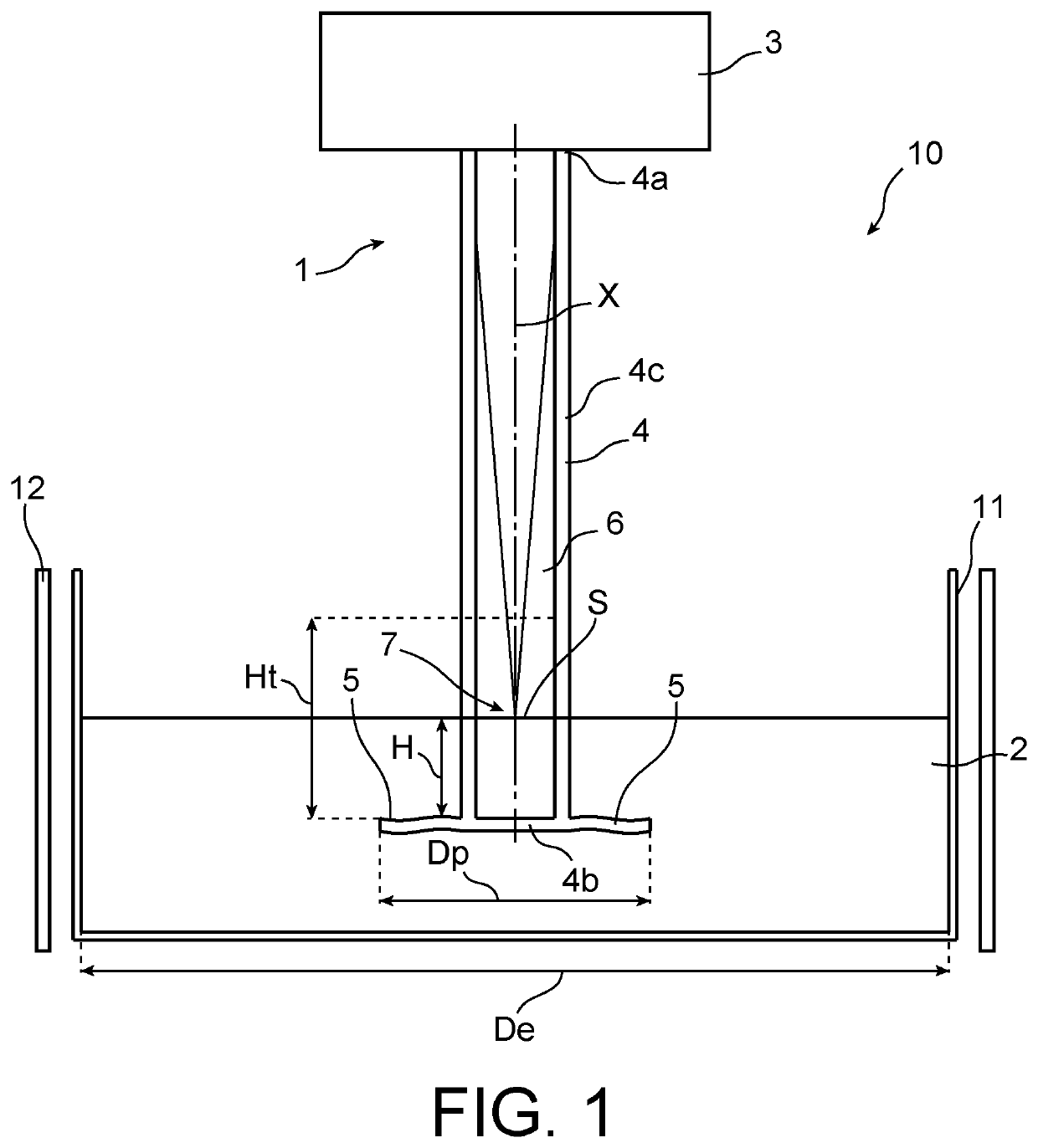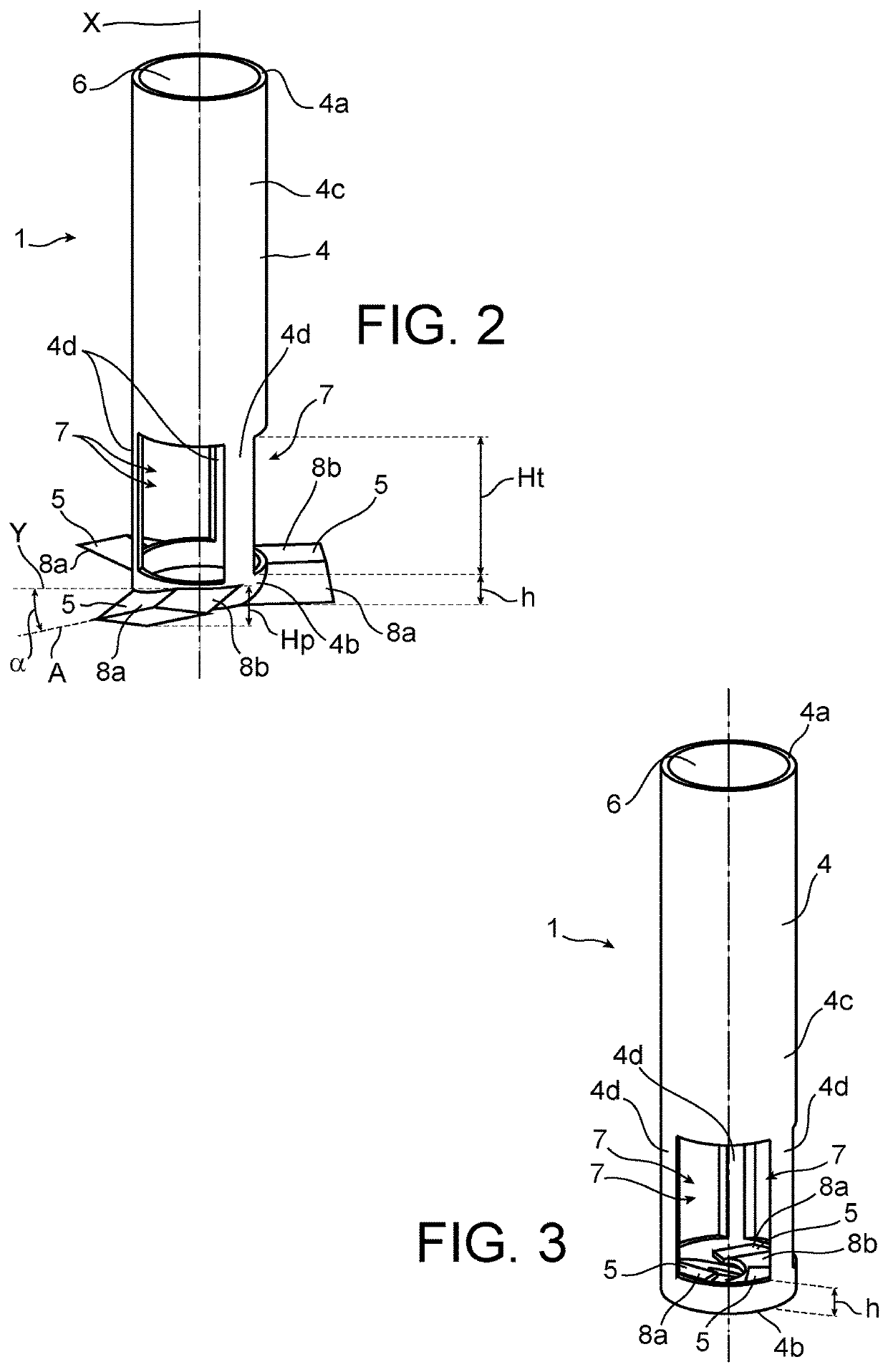Device for characterising a liquid material
a liquid material and device technology, applied in the direction of rotary stirring mixers, instruments, transportation and packaging, etc., can solve the problems of affecting the life and thus the efficiency of photovoltaic cells, the conventional method of material analysis is not entirely satisfactory, and the inability to continuously control the purity of molten metal
- Summary
- Abstract
- Description
- Claims
- Application Information
AI Technical Summary
Benefits of technology
Problems solved by technology
Method used
Image
Examples
first embodiment
[0108]According to FIG. 2, the external blades 5 make it possible to generate an axial flow, i.e. a vertical movement of the liquid, at the level of the blades 5 outside of the central part 4. The direction of this movement, downwards or upwards, is linked to the direction of rotation. The second hollow end 4b enables a sucking upwards of the liquid, i.e. towards the analysis surface S, and its evacuation by means of orifices 7.
second embodiment
[0109]According to FIG. 3, the inner blades 5 enable, for a rotation in the clockwise direction, the sucking of the liquid through the second hollow end 4b upwards and more precisely towards the free analysis surface S and next its evacuation by means of orifices 7. The flow speed remains constant during stirring.
[0110]Unlike blades of the prior art, the behaviour of the liquid generated by the two shapes of blades of the embodiments of FIGS. 2 and 3 is advantageous and original. In addition to the stirring of the liquid, the second hollow end 4b allows a vertical sucking up of the liquid which is evacuated by means of orifices 7 and thus renews the analysis surface S.
[0111]The number of blades 5 may vary as a function of the desired power and stirring speed, the properties of the liquid and the geometry of the vessel 11.
[0112]The direction of rotation is imposed by the shape of the blades 5, and more precisely the wings 8a, 8b.
[0113]Tests were carried out in a vessel 11 in the for...
PUM
 Login to View More
Login to View More Abstract
Description
Claims
Application Information
 Login to View More
Login to View More - R&D
- Intellectual Property
- Life Sciences
- Materials
- Tech Scout
- Unparalleled Data Quality
- Higher Quality Content
- 60% Fewer Hallucinations
Browse by: Latest US Patents, China's latest patents, Technical Efficacy Thesaurus, Application Domain, Technology Topic, Popular Technical Reports.
© 2025 PatSnap. All rights reserved.Legal|Privacy policy|Modern Slavery Act Transparency Statement|Sitemap|About US| Contact US: help@patsnap.com


